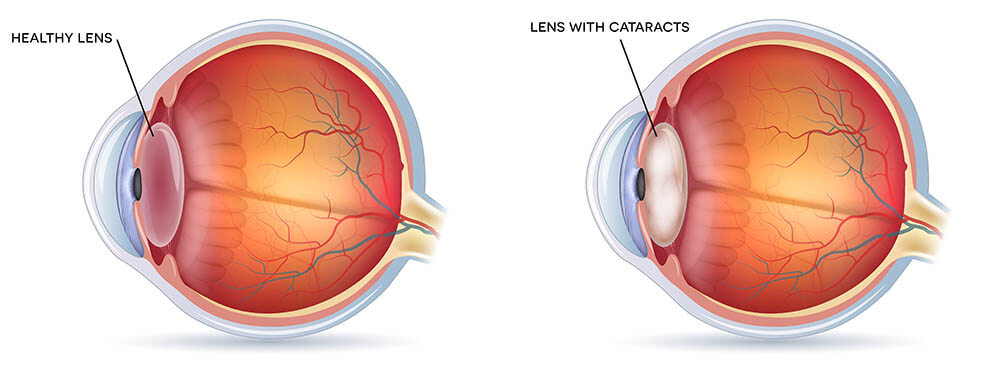Understanding Cataracts
A cataract is the gradual clouding of the eye’s lens due to age or medical-related changes. As the lenses become more cloudy, they can cause visual symptoms, including difficulty driving (particularly at night), blurry vision, or needing more light when reading. If left untreated, cataracts can lead to complete vision loss.

The Symptoms of Cataracts
Symptoms typically develop slowly and can affect one or both eyes. Common symptoms include:
- Blurred vision
- Increased difficulty with vision at night
- Sensitivity to light and glare
- Halos around lights
- Fading or yellowing of colors
- Frequent changes in eyeglasses or contact lens prescription
- Double vision in a single eye
What Causes Cataracts?
Several factors can contribute to the formation of cataracts:
- Age is the most common cause
- Genetics
- Certain conditions, like diabetes or metabolic disorders
- Prolonged use of certain medications
- Prolonged exposure to UV radiation from sunlight
- Smoking and alcohol use
- Eye trauma
- Previous eye surgery
- Vitamin deficiencies
Advanced Cataract Treatments for Clearer Vision
The treatment for symptomatic cataracts is cataract surgery. During your consultation, our physicians will evaluate the health of your eyes and look for any coexisting conditions, including dry eye, glaucoma, macular degeneration, or other ocular diseases.
Cataract surgery can also provide an opportunity to correct and treat refractive errors such as nearsightedness (blurry vision at a distance), farsightedness (blurry vision at near and distance), presbyopia (blurry vision at near associated with aging), and astigmatism.
We offer the most modern and up-to-date technologies for refractive cataract surgery at Washington Eye Institute.
1. Femto Laser Assisted Cataract Surgery
We use a femtosecond laser to make the surgical incisions and fragment the cataract, which we then remove. This technology allows for greater precision than traditional methods, resulting in better visual outcomes and smoother recovery.
2. Toric Astigmatism Correcting Intraocular Lenses
Astigmatism occurs due to an irregular cornea curvature, leading to blurred vision. Toric intraocular lenses (IOLs) are custom-made to match the specific curvature and optical correction needed for each patient's eye, providing clearer vision post-surgery.
3. Apthera™ Intraocular Lens for Presbyopia
The IC-8 Apthera IOL is a presbyopia-correcting lens that provides an extended depth of focus, allowing patients to experience clear vision at multiple distances.
4. Multifocal Intraocular Lenses
Unlike traditional IOLs, which typically focus on one range of vision (usually distance), multifocal IOLs have different zones built into the lens to allow for near, intermediate, and distance vision.
5. Light Adjustable Lenses
After your cataract surgery, light adjustable lenses (LALs) allow your surgeon to adjust the lens' power using a special light treatment. This means the surgeon can fine-tune the lens to the patient's specific visual requirements after recovery.
Are you experiencing changes in your vision? Are you eager to explore options for clearer, brighter sight? Visit us at Washington Eye Institute, and let our specialists guide you through a complete exam and consultation. Here, you're not just a patient; you're a part of our community, and we're committed to enlightening your path to better vision.



